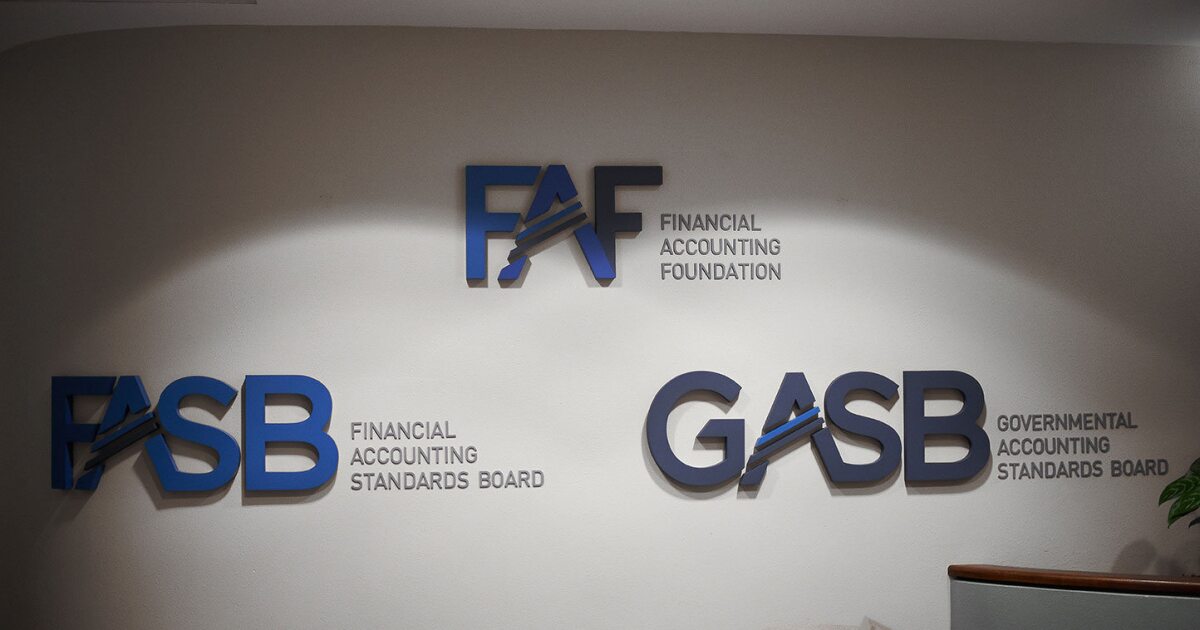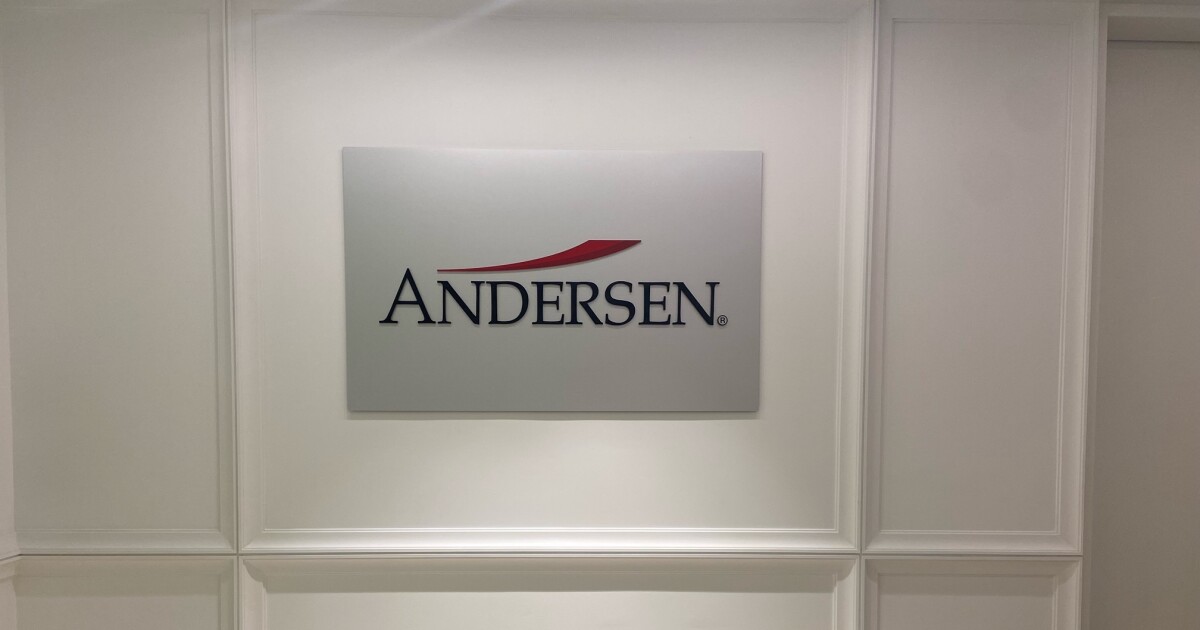It’s a great time to run an accounting firm — except for how hard it is.
While many members of Accounting Today‘s
Even before getting into the issues that are specific to accounting, leaders from some of the most successful firms in the profession noted the atmosphere of economic risk that is enveloping the country — and, indeed, the world.
“The uncertainty of the marketplace remains a challenge for firms across the globe,” explained David Kessler, CEO of New York City-based CohnReznick. “We enter our fiscal 2025 with many of the socio-economic issues we had in fiscal 2024: high inflation and interest rates, tightened lending, uncertainty in the real estate markets, global conflicts.”
Paul Knopp, chair and CEO of Big Four firm KPMG, concurred, framing the issue as “a combination of near-term risks to growth like geopolitics and political uncertainty and structural changes like sticky inflation, high cost of capital, and labor market shifts that raise the cost of doing business, with little margin for error on strategy development and execution.”
Staff, staff, staff
The broad economy impacts everyone, of course, but it is not the primary worry for most firms. That is still the staffing crisis that continues to plague the profession, and which has increasingly preoccupied firm leaders for much of the past decade.
“There are simply not enough accountants within the industry to meet current client demand, and firms are working to continuously fill roles while also prioritizing retention,” said Mary Elliott, CEO of Birmingham, Alabama-based Warren Averett. “Fewer people are taking and passing the CPA exam, making the talent pool even smaller. Lack of diverse talent has been an important issue for the industry for several years, and competition for hiring employees with diverse backgrounds has continually increased as more firms make diversity a priority.”

WEERAPAT WATTANAPICHAYA/patpitchaya – stock.adobe.com
To be clear, this is a problem that hits all levels of the profession. “Staffing is, and remains, the No. 1 issue for small and midsized firms,” said Dawn Moeder, managing partner of Lane Gorman Trubitt, in Houston. “We know that enrollment for accounting majors has been trending downward for nearly a decade, and the numbers are even more dire for those that want to pursue a CPA designation. That, coupled with an aging and retiring existing CPA population, means that the tug of war for talent gets even stronger.”
The difficulties caused by that tug of war manifest themselves in multiple ways, starting with how firms have had to work harder than ever to find talent.
“Recruiting is a year-round effort,” said Darci Congrove, managing director at Columbus, Ohio-based GBQ Partners. “Attracting, developing and retaining talent is a continuous process, which is much different than even five years ago, when it was a seasonal activity. This takes a lot more bandwidth within HR and from managers and leaders.”
One key element of that difficulty, according to William Dunton, managing partner at Abacus CPAs, in Springfield, Missouri, is the profession’s reputation: “Unfortunately, the accounting industry faces a challenge in perception, leading to a declining interest in accounting careers among students, even at the high school level,” he said. “Recent studies indicate a concerning trend, with a 3% decrease in graduates holding bachelor’s degrees in accounting, an 8% decrease in master’s degrees, and a substantial 17% drop in new CPA exam candidates.”
(Read about the
“Public accounting isn’t a dream job for enough people,” agreed David Wurtzbacher, founder and CEO of Ascend. “Most people would go to school for 150 hours and power through busy seasons for their dream job. Why isn’t it a dream job? It’s too compliance-driven (read: repetitive, sometimes boring); there aren’t enough people to meet client demand; paths of career advancement and development are too slow; financial incentives are outdated (low, salary-heavy wages and the long trek to receive a retirement buyout in your 60s or 70s); workplace cultures don’t engage their employees in the purpose or mission of their work; technology feels obsolete compared to every other part of our lives; and the partnership model of management doesn’t result in good leadership or decision-making that can trickle down into a better work experience for everyone.”
As that long list of problems indicates, the staffing issue covers a lot of ground, and looms so large that many firms are focusing on particular aspects of it.
Burnout and workload compression, especially during tax season, are one key area. “Managing busy season workloads for employees and getting the work done,” is a major issue, according to Dave Levine, managing partner at Chicago’s Topel Forman. “Employees are expecting to work less hours than what has historically occurred in the profession. We are trying to keep everyone’s hours down to a more reasonable level, but with the compression of the tax deadlines, it is difficult to balance getting the work done and providing work-life balance for our people.”
With remote and hybrid work options emerging as a significant perk for new employees, another major concern around staffing for major firms is “keeping staff engaged and connected to leadership and to each other,” explained Kathy Flaherty, a principal at Fairfax, Virginia-based Matthews, Carter and Boyce. “As the hybrid work environment evolves, it is essential for all team members to have a connection to others, including both internally and with our clients.”
“We understand that our staff are our greatest asset,” she concluded.
Keeping up with IT
Staff may be the profession’s greatest asset, but its newest asset is usually some form of technology, with firms relying on software solutions to make up for capacity shortfalls, boost efficiency and enable new services and practice offerings — all while technology is evolving unbelievably rapidly and requires an unprecedented level of capital investment.
“We think the industry is facing a technology reckoning unlike any before,” warned Ascend’s Wurtzbacher.
Many leaders from the Top 100 Firms and Regional Leaders agreed. “A critical issue for firms our size is the ability to stay focused on rising technologies (including AI) and managing the real costs of doing so,” said Kevin Keane, executive chairman of New York City-based PKF O’Connor Davies. “Along with the cost of software, we must train and implement every new system, hoping to perfect each before moving on to the next. For us, that involves over 1,600 team members’ time. Costs here can be exorbitant.”
As the development costs of cutting-edge tech like artificial intelligence rise, the disparity in resources at different levels of the profession is a major concern.
“It is clear the biggest firms have been for quite some time investing substantive dollars and time in technology solutions that are targeted at materially reducing the human elements of traditional tax compliance, assurance and accounting assistance services,” said J. Del Walker, chief growth officer and tax director at PKF Texas, in Houston. “It is not really feasible for midsized firms to develop such solutions internally.”
The third-party developers and vendors who traditionally serve the profession aren’t filling the gap when it comes to the kinds of solutions the biggest firms are able to develop in-house, Walker continued: “They are starting to offer them on a limited scope and scale basis, but they are very expensive given they are ‘custom-designed individual solutions.’ The larger firms currently have access to these tools and are starting to use them to gain deeper penetration into the upper end of our middle-market client space.”
The investment involved in tech isn’t limited to the cost of the tools, however; it also ties in with the crucial issue of staff.
“A challenge that will require thoughtful consideration in the near future is the effective upskilling of talent to prepare for emerging technologies such as AI, which are becoming increasingly integral to the accounting industry,” warned Nishta Sharma, CEO of Atlanta-based KNAV Advisory Inc.
Competition and consolidation
While staffing and technology were by far the most commonly cited issues for firm leaders, a few other worries emerged that were broadly shared. To start, they’re concerned about the ramifications of the long-term merger mania on the competitive landscape.
“The trend toward consolidation in the industry, driven by the need to expand service offerings and achieve economies of scale, poses strategic challenges,” said Joseph Damiano, CEO and managing partner of Parsippany, New Jersey-based Sax. “Firms must carefully navigate mergers and acquisitions to maintain their identity, culture and client relationships amid the consolidation wave, ensuring they emerge stronger and more versatile.”
Competition is rife everywhere, but can be particularly difficult for local firms. “EEPB is one of the largest independent accounting firms in Houston,” said director Greg Crochet. “While we take pride in our history and the competitive advantage we have created through our personalized service to clients and focus on the success of our employees, there are now many more national and regional firms in the Houston market than in the past. We must continue to increase our brand awareness and highlight the client-focused care that set us apart from all the other firms.”
Shannon Lawrence, director of operations at Williams Adley in Washington, D.C., further elaborated on the competitive difficulties facing firms like hers: “Small firms must constantly strive to differentiate themselves, establish a robust brand, and navigate changing market dynamics to maintain competitiveness and expand their customer base, all while contending with factors such as reduced government budgets, price sensitivity among smaller agencies, and competition from midsized and fellow small firms in proposal bids,” she said.
What’s worse is that more and more threats are coming from outside the profession.
“Competition is heating up from non-CPA firms that are promising to use ‘technology and AI’ to ‘disrupt’ accounting services to small and midsized businesses,” said Healy Jones, vice president of financial strategy at San Francisco’s Kruze Consulting. “These firms primarily fight for market share by offering their services at heavy discounts, so pricing pressure will be a major issue in the coming years.”
Compliance gets more complex
One of accounting firms’ core competencies is grappling with the regulatory environment to make sure their clients don’t fall afoul of any compliance mandates — but this is becoming harder and harder to do as the scope and pace of regulatory change get ever faster.
“One issue facing firms of our size includes navigating a rapidly evolving regulatory landscape and staying informed on developments to help businesses comply with and effectively manage their risks,” said Richard Kopelman, CEO and managing partner of Atlanta-based Aprio.
For a number of firms, one area stood out as problematic: tax.
“The IRS in particular has continued to issue new guidance, often very late in the year, which has required accounting firms to quickly implement new procedures and complete new forms,” said Heather Perry, office managing partner at Dauby O’Connor & Zaleski in Carmel, Indiana. “The trend does not appear to be changing any time soon.”

And keeping up requires efforts that aren’t rewarded as much as they should be.
“The growing complexity of tax law, combined with the perception that these complexities do not add commensurate value to clients, presents a significant challenge,” said Jennifer Carroll, marketing manager at Houston’s Miller Grossbard Advisors. “Firms are required to invest more resources in staying abreast of legal changes and ensuring compliance, often without the ability to charge clients for this increased burden. This challenge is exacerbated by the need to provide advisory services that justify the cost to clients while navigating an increasingly intricate regulatory environment.”
Change is hard
A final key area of concern among the leading firms is being able to manage all of the changes that they and the profession are facing.
“The biggest issue accounting firms face is the pace of change in our industry ― combined with a shifting business environment for our clients ― which is spurring them to rethink their growth strategies,” said Seth Siegel, CEO of Grant Thornton. “Some firms have been addressing these issues by considering a spin-off of their consulting practices; others have changed their ownership structures; and some are looking at mergers, or partnering with third-party capital and operating partners such as private equity. While the common goal in all these scenarios is to increase the firm’s competitive advantage and growth trajectory, it’s clear that firms are taking many different approaches to achieve this goal, and there isn’t a one-size-fits-all solution.”
Adaptability is critical — and can be hard to maintain.
“As a firm grows, it’s easy to lose the edge that you had when you could move quickly and adapt,” said Jeffrey Weiner, chairman and CEO of New York City-based Marcum. “It’s something we focus on. Despite our considerable scale, Marcum prioritizes being agile, adaptive and free from excessive bureaucracy.”
Change is also not something the profession is always comfortable with, warned Todd Harrington, managing partner of Trout CPA in Lancaster, Pennsylvania: “Our general hesitancy to move away from traditional methods and providers and toward something more progressive is an ongoing challenge to the CPA firm model.”
A willingness to make both big and small changes is going to be critical if the profession hopes to overcome the many issues it faces — from the staffing crisis and the pressure to keep up with technology, to competitive pressures and beyond.
While it’s easy to lament the problems all these challenges represent, it’s worth remembering that there is tremendous upside to mastering them. As CohnReznick’s Kessler pointed out, “Every issue provides an opportunity to evolve.”




